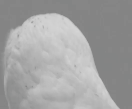
| Users Online Now: 2,081 (Who's On?) | Visitors Today: 927,863 | |
| Pageviews Today: 1,689,749 | Threads Today: 553 | Posts Today: 12,296 |
| 04:41 PM | ||

| Users Online Now: 2,081 (Who's On?) | Visitors Today: 927,863 | |
| Pageviews Today: 1,689,749 | Threads Today: 553 | Posts Today: 12,296 |
| 04:41 PM | ||
Page 1 Previous Page Next Page | |
LEAKED GRANT PROPOSAL FROM 2018 DETAILS HIGH-RISK CORONAVIRUS RESEARCH | |
| CitizenPerth™
Offer Upgrade User ID: 80241579 09/27/2021 10:45 AM Report Abusive Post Report Copyright Violation | BIG Article: The proposal, rejected by U.S. military research agency DARPA, describes the insertion of human-specific cleavage sites into SARS-related bat coronaviruses. Sharon LernerMaia HibbettSharon Lerner, Maia Hibbett September 24 2021, 2:16 a.m. [snip] A GRANT PROPOSAL written by the U.S.-based nonprofit the EcoHealth Alliance and submitted in 2018 to the Defense Advanced Research Projects Agency, or DARPA, provides evidence that the group was working — or at least planning to work — on several risky areas of research. Among the scientific tasks the group described in its proposal, which was rejected by DARPA, was the creation of full-length infectious clones of bat SARS-related coronaviruses and the insertion of a tiny part of the virus known as a “proteolytic cleavage site” into bat coronaviruses. Of particular interest was a type of cleavage site able to interact with furin, an enzyme expressed in human cells. The EcoHealth Alliance did not respond to inquiries about the document, despite having answered previous queries from The Intercept about the group’s government-funded coronavirus research. The group’s president, Peter Daszak, acknowledged the public discussion of an unfunded EcoHealth proposal in a tweet on Saturday. He did not dispute its authenticity. Since the genetic code of the coronavirus that caused the pandemic was first sequenced, scientists have puzzled over the “furin cleavage site.” This strange feature on the spike protein of the virus had never been seen in SARS-related betacoronaviruses, the class to which SARS-CoV-2, the coronavirus that causes the respiratory illness Covid-19, belongs. The furin cleavage site enables the virus to more efficiently bind to and release its genetic material into a human cell and is one of the reasons that the virus is so easily transmissible and harmful. But scientists are divided over how this particular site wound up in the virus, and the cleavage site became a major focus of the heated debate over the origins of the pandemic. Many who believe that the virus that caused the pandemic emerged from a laboratory have pointed out that it is unlikely that the particular sequence of amino acids that make up the furin cleavage site would have occurred naturally. Adherents of the idea that SARS-CoV-2 emerged from a natural spillover from animal hosts have argued that it could have evolved naturally from an as-yet-undiscovered virus. Further, they argued, scientists were unlikely to have engineered the feature. “There is no logical reason why an engineered virus would utilize such a suboptimal furin cleavage site, which would entail such an unusual and needlessly complex feat of genetic engineering,” 23 scientists wrote earlier this month in an article in the journal Cell. “There is no evidence of prior research at the [Wuhan Institute of Virology] involving the artificial insertion of complete furin cleavage sites into coronaviruses.” But the proposal describes the process of looking for novel furin cleavage sites in bat coronaviruses the scientists had sampled and inserted them into the spikes of SARS-related viruses in the laboratory. “We will introduce appropriate human-specific cleavage sites and evaluate growth potential in [a type of mammalian cell commonly used in microbiology] and HAE cultures,” referring to cells found in the lining of the human airway, the proposal states. The new proposal, which also described a plan to mass vaccinate bats in caves, does not provide conclusive evidence that the virus that caused the pandemic emerged from a lab. And virus experts remain sharply divided over its origins. But several scientists who work with coronaviruses told The Intercept that they felt that the proposal shifted the terrain of the debate. Tipping the Scales “Some kind of threshold has been crossed,” said Alina Chan, a Boston-based scientist and co-author of the upcoming book “Viral: The Search for the Origin of Covid-19.” Chan has been vocal about the need to thoroughly investigate the possibility that SARS-CoV-2 emerged from a lab while remaining open to both possible theories of its development. For Chan, the revelation from the proposal was the description of the insertion of a novel furin cleavage site into bat coronaviruses — something people previously speculated, but had no evidence, may have happened. “Let’s look at the big picture: A novel SARS coronavirus emerges in Wuhan with a novel cleavage site in it. We now have evidence that, in early 2018, they had pitched inserting novel cleavage sites into novel SARS-related viruses in their lab,” said Chan. “This definitely tips the scales for me. And I think it should do that for many other scientists too.” Richard Ebright, a molecular biologist at Rutgers University who has espoused the possibility that SARS-CoV-2 may have originated in a lab, agreed. “The relevance of this is that SARS Cov-2, the pandemic virus, is the only virus in its entire genus of SARS-related coronaviruses that contains a fully functional cleavage site at the S1, S2 junction,” said Ebright, referring to the place where two subunits of the spike protein meet. “And here is a proposal from the beginning of 2018, proposing explicitly to engineer that sequence at that position in chimeric lab-generated coronaviruses.” “A possible transmission chain is now logically consistent — which it was not before I read the proposal.” Martin Wikelski, a director at the Max Planck Institute of Animal Behavior in Germany, whose work tracking bats and other animals was referenced in the grant application without his knowledge, also said it made him more open to the idea that the pandemic may have its roots in a lab. “The information in the proposal certainly changes my thoughts about a possible origin of SARS-CoV-2,” Wikelski told The Intercept. “In fact, a possible transmission chain is now logically consistent — which it was not before I read the proposal.” But others insisted that the research posed little or no threat and pointed out that the proposal called for most of the genetic engineering work to be done in North Carolina rather than China. “Given that the work wasn’t funded and wasn’t proposed to take place in Wuhan anyway it’s hard to assess any bearing on the origin of SARS-CoV-2,” Stephen Goldstein, a scientist who studies the evolution of viral genes at the University of Utah, and an author of the recent Cell article, wrote in an email to The Intercept. Other scientists contacted by The Intercept noted that there is published evidence that the Wuhan Institute of Virology was already engaged in some of the genetic engineering work described in the proposal and that viruses designed in North Carolina could easily be used in China. “The mail is filled with little envelopes with plasmid dried on to filter paper that scientists routinely send each other,” said Jack Nunberg, director of the Montana Biotechnology Center at the University of Montana. NIH Documents Provide New Evidence U.S. Funded Gain-of-Function Research in Wuhan Vincent Racaniello, a professor of microbiology and immunology at Columbia University, was adamant that the proposal did not change his opinion that the pandemic was caused by a natural spillover from animals to humans. “There is zero data to support a lab origin ‘notion,’” Racaniello wrote in an email. He said he believed that the research being proposed had the potential to fall in the category of gain-of-function research of concern, as did an experiment that was detailed in another grant proposal recently obtained by The Intercept. The government funds such research, in which scientists intentionally make viruses more pathogenic or transmissible in order to study them, only in a narrow range of circumstances. And DARPA rejected the proposal at least in part because of concerns that it involved such research. While Racaniello acknowledged that the research in the DARPA proposal entailed some danger, he said: “the benefits far, far outweigh the risk.” He also said the fact that the viruses described in the proposal were not known pathogens mitigated the concern. “This is not SARS,” he said, referring to SARS-CoV-1, the virus that caused a 2003 outbreak. “It’s SARS-related.” But SARS-CoV-2 is not a direct descendant of that virus — it’s a relative. In fact, the viruses described in the grant proposal, which was first posted online by the research group DRASTIC, were not known pathogens. And the authors of the grant proposal make the case that because the scientists would be using SARS-related bat viruses, as opposed to the SARS virus that was known to infect humans, the research was exempt from “gain-of-function concerns.” But according to several scientists interviewed by The Intercept, the viruses presented a threat nevertheless. “The work describes generating full-length bat SARS-related coronaviruses that are thought to pose a risk of human spillover. And that’s the type of work that people could plausibly postulate could have led to a lab-associated origin of SARS-CoV-2,” said Jesse Bloom, a professor at Fred Hutchinson Cancer Research Center and director of the Bloom Lab, which studies the evolution of viruses. Bloom pointed out that scientists acknowledge the risk to humans in their proposal. “It’s an explicit goal of the grant to identify the bat SARS-related coronaviruses that they think pose the highest risk.” Stuart Newman, a professor of cell biology who directs the developmental biology laboratory at New York Medical College, also said the fact that the viruses weren’t known to be dangerous didn’t preclude the possibility that they might become so. “That’s really disingenuous,” Newman said of the argument. “The people that are claiming natural emergence say that it begins with a bat virus that evolved to be compatible with humans. If you use that logic, then this virus could be a threat because it could also make that transition.” Newman, a longtime critic of gain-of-function research and founder of the Council for Responsible Genetics, said that the proposal confirmed some of his worst fears. “This is not like slightly stepping over the line,” said Newman. “This is doing everything that people say is going to cause a pandemic if you do it.” [end snip] FULL ARTICLE: [link to theintercept.com (secure)] Last Edited by CitizenPerth™ on 09/27/2021 10:49 AM It's life as we know it, but only just. [link to citizenperth.wordpress.com] sic ut vos es vos should exsisto , denego alius vicis facio vos change , exsisto youself , proprie |
| Anonymous Coward User ID: 85164658 01/28/2023 10:24 AM Report Abusive Post Report Copyright Violation | |
| Anonymous Coward User ID: 80978765 01/28/2023 10:38 AM Report Abusive Post Report Copyright Violation | |
A Deplorable Neanderthal
Forum Moderator User ID: 84800002 01/28/2023 10:42 AM  Report Abusive Post Report Copyright Violation | |
Page 1 Previous Page Next Page | |

